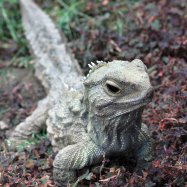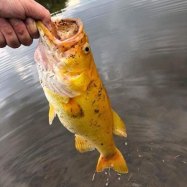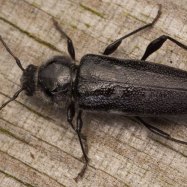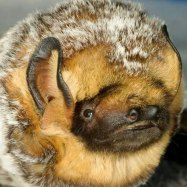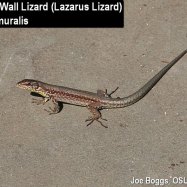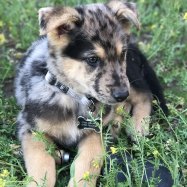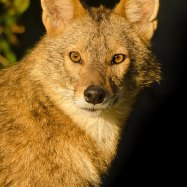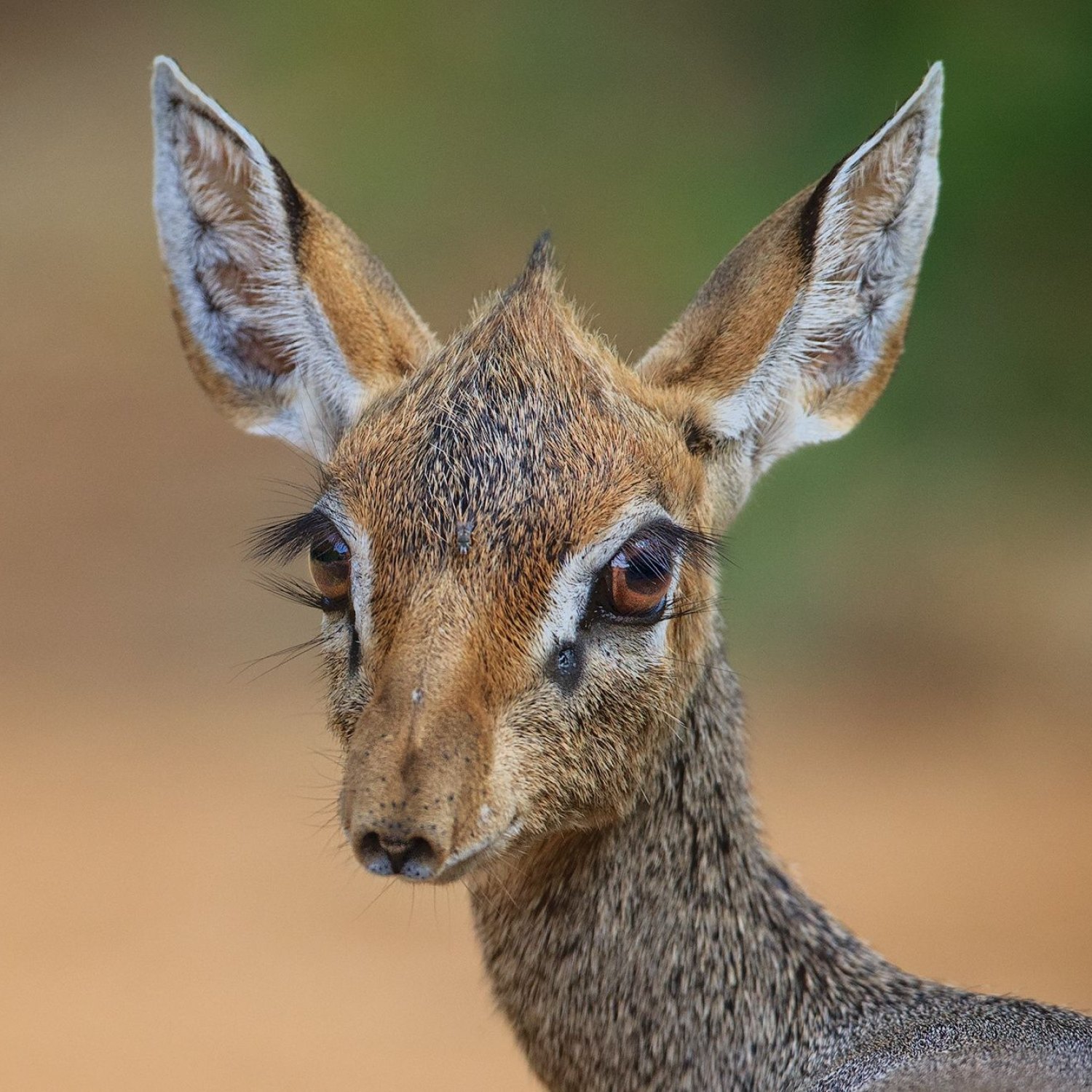
Dik Dik
70-100 cm
Did you know that the Dik Dik, a small and compact antelope found in Tanzania, is part of the Bovidae family? With a body length of 70-100 cm, these adorable creatures are herbivores and are known for their unique way of jumping in zigzag patterns when threatened. Have you ever spotted a Dik Dik on your safari adventures? Keep an eye out for these fascinating animals. #DikDik #Tanzania #Antelopes
Animal Details Summary:
Common Name: Dik Dik
Kingdom: Animalia
Habitat: Savannah grasslands and bushland
The Dik Dik: The Cutest Antelope in the Savanna
Deep in the grasslands of Africa, there is a tiny creature that many may overlook in favor of the larger and more majestic animals. But for those who take the time to look closer, they will find a creature that truly captures the heart – the Dik Dik. Despite its small size, this unique antelope has a lot to offer and is a fascinating species to learn about.Introducing the Dik Dik
Scientifically known as Madoqua kirkii, and commonly referred to as Dik Dik, this small antelope is a member of the Bovidae family Dik Dik. They are found in eastern and southern Africa, with their habitat ranging from savannah grasslands to bushland. Their geographical distribution covers multiple countries in Africa, but the majority of Dik Diks can be found in Tanzania.Dik Diks are herbivorous mammals, meaning they feed solely on plants. They have a compact body shape and are generally small in size, measuring between 70 to 100 cm in length and weighing between 3 to 6 kg. Despite their small stature, they are known for their incredible speed and agility, making them difficult prey for predators such as lions and leopards.
The Dik Dik's most distinct feature is its sandy brown to grayish-brown coloration, which helps them blend in with their natural surroundings. They also have a small tuft of brown hair on the top of their head, giving them a somewhat comical appearance. But don't be fooled by their cute and cuddly appearance. These animals are strong and resilient, able to navigate through the harsh and unforgiving African landscape Dachshund Mix.
A Unique Habitat
The Dik Dik can be found in a variety of habitats, including thorn scrub, dry bushland, and acacia woodland. They are most commonly found in the savannah grasslands, where they can easily conceal themselves among the tall grasses and shrubs. This makes it easier for them to avoid predators and also provides them with a variety of plants to feed on.Their small size also allows them to find shelter in narrow spaces, such as dense bushes and rocky crevices. This is especially useful during the dry season when water sources are scarce, and Dik Diks need to conserve energy. By finding shelter, they can avoid the hot sun and reduce their water loss through perspiration.
Herbivorous Diet
As herbivores, Dik Diks have a specialized diet that consists mainly of leaves, fruits, flowers, and shoots. They are selective feeders, meaning they carefully choose what they eat and only consume the most nutritious plants. This is why they are often seen feeding on young, succulent shoots at the top of bushes and trees.Their unique diet also makes them important contributors to the ecosystem. They aid in the pollination of plants by transferring pollen from one flower to another as they feed. They also help to disperse seeds, which plays a crucial role in the regeneration of plant species in their habitat.
The Family of Dik Diks
In the animal kingdom, family dynamics can vary greatly from species to species. Dik Diks, however, have a unique family structure that sets them apart from other antelopes. They are monogamous, meaning they mate for life and form strong bonds with their partner. They are also territorial animals, and a male and female Dik Dik will defend their territory together.Being small in size, Dik Diks are vulnerable to predators, and for this reason, they rely on their strong family bonds to survive. They are often seen grooming each other, an act that not only strengthens their bond but also removes parasites and keeps their coat clean.
Conservation Status
Despite their cute and endearing nature, Dik Diks face numerous threats to their survival. Habitat loss is a significant concern as human development continues to fragment their natural habitat. This not only disrupts their feeding and breeding patterns but also leaves them vulnerable to predators without a safe place to hide.The commercial trade of Dik Diks as exotic pets is also a major issue. This illegal activity not only poses a threat to the animals' survival but also to the ecosystems they are taken from. It is crucial for governments and conservation organizations to work together to enforce laws and protect this species.
Luckily, efforts are being made to conserve and protect the Dik Dik population. Tanzania has designated a section of its savannah grasslands as a protected area for Dik Diks, providing them with a safe haven to thrive and reproduce. Additionally, efforts to educate local communities about the importance of preserving the Dik Dik's habitat are also underway.
The Dik Dik in Culture
In certain African cultures, the Dik Dik holds significance and is often seen as a symbol of good luck and prosperity. There are even traditional ceremonies that involve the ritualistic killing of a Dik Dik, with the belief that it will bring good fortune to the community. This practice, however, is not condoned and has resulted in declining Dik Dik populations in certain regions.In popular culture, the Dik Dik has also found its place in literature and film. In Johan Doornenbal's book, "Dik Dik of the Bushveld," he recounts his adventures in Tanzania and his encounters with this endearing animal. In the Disney movie "Robin Hood," the character of Toby the turtle is often mistaken for a Dik Dik due to his similar appearance and fast movements.
Conclusion
In conclusion, the Dik Dik may be small in size but is big in heart and plays a vital role in African ecosystems. This unique antelope has adapted to thrive in harsh conditions, making it a resilient and fascinating species to observe. Its cute appearance and heartwarming family dynamics make it a beloved creature in both African culture and the animal kingdom.But as with many other species, the Dik Dik's survival is threatened by human activities. It is essential for us to take measures to protect their habitat and ensure their survival for generations to come. Every creature, no matter how small, deserves the chance to live and thrive in its natural environment. The Dik Dik is a reminder of the beauty and diversity of the animal kingdom, and we must do our part to preserve it.

Dik Dik
Animal Details Dik Dik - Scientific Name: Madoqua kirkii
- Category: Animals D
- Scientific Name: Madoqua kirkii
- Common Name: Dik Dik
- Kingdom: Animalia
- Phylum: Chordata
- Class: Mammalia
- Order: Artiodactyla
- Family: Bovidae
- Habitat: Savannah grasslands and bushland
- Feeding Method: Herbivorous
- Geographical Distribution: Eastern and Southern Africa
- Country of Origin: Multiple countries in Africa
- Location: Tanzania
- Animal Coloration: Sandy brown to grayish-brown
- Body Shape: Small and compact
- Length: 70-100 cm
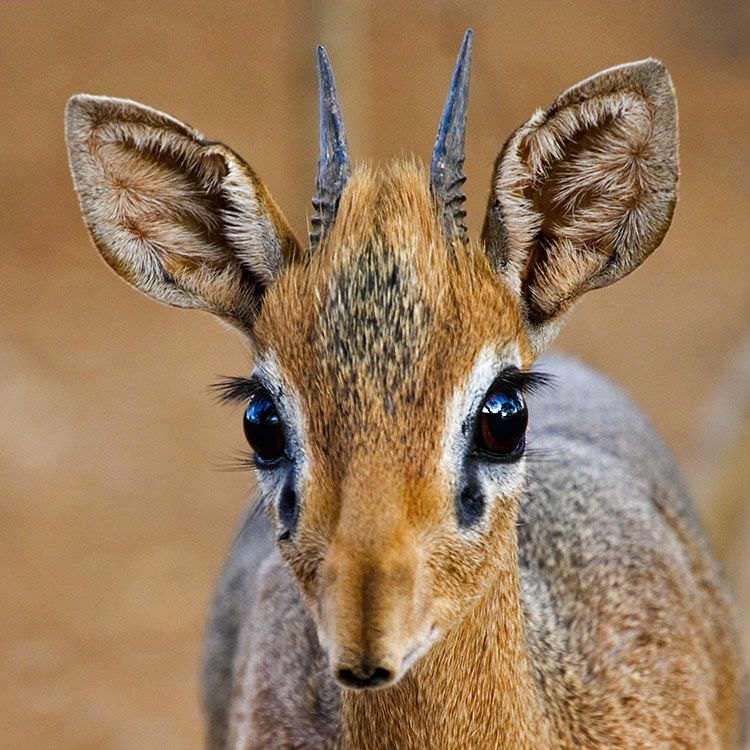
Dik Dik
- Adult Size: 3-6 kg
- Average Lifespan: 10-15 years
- Reproduction: Sexual
- Reproductive Behavior: Monogamous
- Sound or Call: High-pitched whistle
- Migration Pattern: Non-migratory
- Social Groups: Mated pairs
- Behavior: Territorial and secretive
- Threats: Habitat loss and poaching
- Conservation Status: Near Threatened
- Impact on Ecosystem: Seed dispersal
- Human Use: Hunted for meat and skins
- Distinctive Features: Large eyes and elongated snout
- Interesting Facts: They have scent glands on their heads to mark territory.
- Predator: Cheetahs, leopards, and hyenas
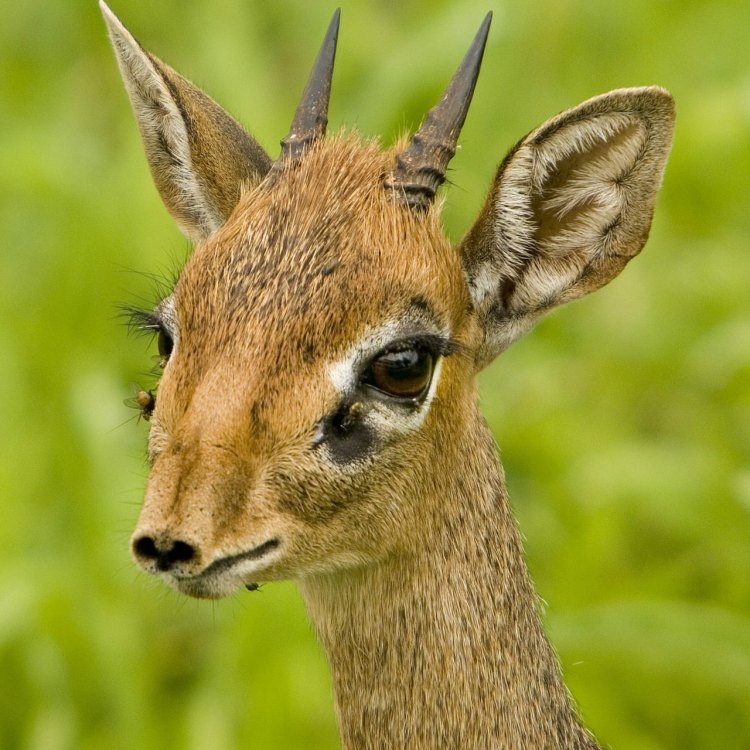
Madoqua kirkii
The Fascinating World of Dik Diks: The Secretive Monogamous Antelope
When we think of the African savannah, we often picture majestic lions, towering giraffes, and huge elephant herds. However, there is a small, unassuming antelope that calls the savannah its home – the Dik Dik.The Dik Dik is a small-sized antelope species, averaging only 3-6 kilograms in adult weight. But don't let its size fool you, as this unique animal has several remarkable features and behaviors that make it stand out in the savannah PeaceOfAnimals.Com.
Let's take a closer look at the world of Dik Diks, from their size and lifespan to their role in the ecosystem and their fascinating mating behavior.
The Size and Lifespan of Dik Diks
The Dik Dik, also known as the Madoqua, is one of the smallest species of antelopes found in Africa. They are native to the eastern and southern parts of Africa, specifically in Kenya, Tanzania, Somalia, Mozambique, and Namibia.On average, Dik Diks weigh between 3 to 6 kilograms, making them about the size of a small dog. These tiny animals stand at just around 30-40 centimeters at the shoulder, with a body length of 50-70 centimeters. Their small size makes them perfect for navigating through thick bushes and shrubs in the savannah.
Despite their small stature, Dik Diks have a relatively long lifespan. In the wild, they can live for around 10-15 years, while in captivity, they have been known to live up to 18 years.
Reproduction and Mating Behavior
Dik Diks are monogamous animals, meaning they form lifelong bonds with their partners Deer Head Chihuahua. This unique behavior is not common in the animal kingdom, especially among antelope species.Once they have found their lifelong mate, Dik Diks will form a monogamous pair that stays together for life. The pair will live alone, with no involvement in larger herds or groups. They are considered solitary animals, but they will always remain close to each other.
When it comes to reproduction, Dik Diks follow a sexual reproduction pattern. They usually breed during the dry season when food is scarce, and the risk of predators is low. The female Dik Dik will give birth to a single calf after a gestation period of around six months.
Interestingly, Dik Diks have a unique way of marking their territory and communicating with each other. They have scent glands on their heads, which they use to mark their territory and attract their mate. This behavior adds an extra layer to their already fascinating monogamous relationship.
Sounds and Communication
While some animals communicate through roars and growls, Dik Diks have a distinctive sound, a high-pitched whistle, which they use to communicate with each other. This whistle can be heard from a considerable distance and is often used to warn their mate of potential danger.Apart from their whistle, Dik Diks also communicate through body language, such as tail flicks and head movements.
Behavior and Threats
Being small animals in a savannah full of predators, Dik Diks have developed a unique set of behaviors to protect themselves. They are known to be territorial and secretive creatures, often hiding in thick vegetation and staying away from other animals.Dik Diks are also known for their quick and agile movements, making it difficult for predators to catch them. They can reach speeds of up to 40 kilometers per hour, making it challenging for predators to keep up with them.
Unfortunately, the biggest threat to Dik Diks is habitat loss and poaching. With the continuous expansion of human settlements and agriculture, Dik Diks are losing their natural habitat, and their numbers are declining.
Additionally, Dik Diks are hunted for their meat and skins, further contributing to their population decline. As a result, the International Union for Conservation of Nature (IUCN) has listed the Dik Dik as a Near Threatened species.
The Role of Dik Diks in the Ecosystem
Despite their small size, Dik Diks play a crucial role in the ecosystem. As herbivores, they primarily feed on leaves, fruits, and flowers, and in turn, contribute to seed dispersal, helping to maintain a healthy balance in the savannah ecosystem.Their small size also makes them easy prey for larger predators, making them an essential part of the food chain. Cheetahs, leopards, and hyenas are among the main predators of Dik Diks, highlighting their important role in the ecosystem.
Human Use and Distinctive Features
In addition to being hunted for their meat and skins, Dik Diks have had a long history of being used by humans for various purposes. In some cultures, Dik Dik skins are used to make traditional clothing, while in others, their meat is consumed as a delicacy.One of the most distinctive features of Dik Diks is their appearance. They have large, expressive eyes, which have earned them the nickname "Groot Dik-Dik," meaning "large flash of lightning" in Afrikaans. They also have an elongated snout, giving them a unique and adorable appearance.
In Conclusion
In the vast and diverse African savannah, the Dik Dik may seem like an insignificant and often overlooked creature. But scratch beneath its surface, and you will discover a fascinating world of unique behaviors, relationships, and adaptations.From their monogamous mating behavior and high-pitched whistle to their role in the ecosystem and distinctive appearance, the Dik Dik is a one-of-a-kind animal that deserves our attention and protection. As we continue to learn and appreciate these remarkable animals, we must also work towards conserving their habitat and ensuring their survival for generations to come.
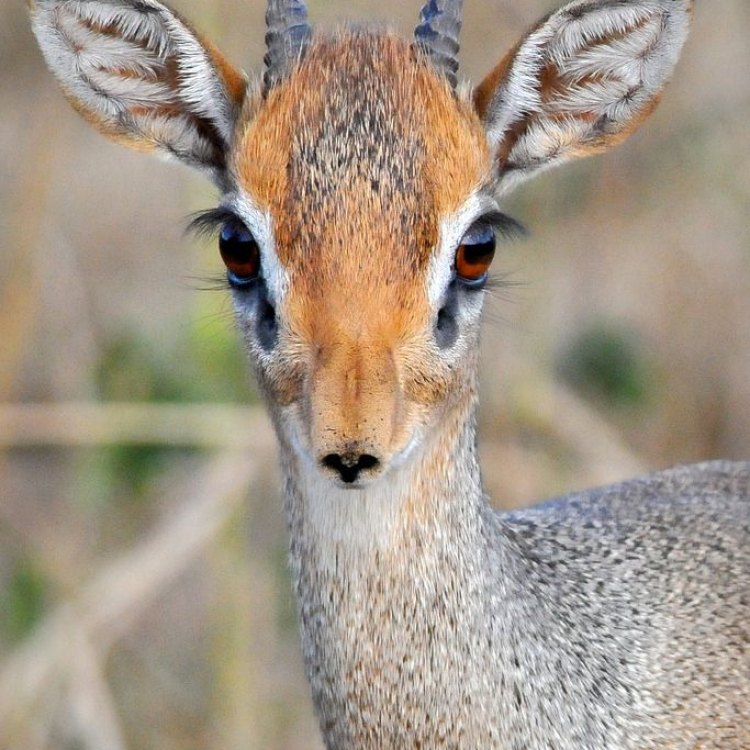
The Dik Dik: The Cutest Antelope in the Savanna
Disclaimer: The content provided is for informational purposes only. We cannot guarantee the accuracy of the information on this page 100%. All information provided here may change without prior notice.

